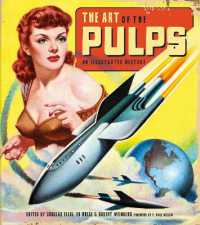Full Description
This timely book explores the transitional experiences of undergraduates in minority groups studying at university and how arts methods and practices can play an important role in facilitating these transitions.
Based on research from UK universities, this volume is the first to draw together the experiences of educators in the humanities and social sciences who integrate sensory methodologies in taught curriculum, in relation to arts educators who add extra-curricular arts practice. It offers an original, contextualised analysis of how to enable university structures to adapt to complexity, difference, and diversity, taking the view that arts practice forms meeting points for confident interconnection and spaces of self-representation. It outlines the novel concept of sensory transition in how arts practices can be used to address issues of inclusion, diversity, and self-representation for minority groups. Each chapter offers an in-depth analysis of significant issues, such as dimensions of race, gender, and class and the specificities of social and cultural group experiences as they occur in arts practice. The book reflects on the decolonisation of university structures and curriculum and demonstrates how universities can support students and build spaces for self-representation in academic courses.
Accessible and investigative, this book is essential reading for academics, researchers, and postgraduate students in the field of higher education, inclusion, and arts methods. It will also be of great interest to higher education staff interested in decolonisation, diversity, and university futures.
Contents
1. Introduction 2. Theorising Sensory Transition 3. Factors of Difference: Changing Environments 4. Meeting Points in Arts Practice 5. Peer Groups, Inclusion and Belonging 6. Community and Leadership 7. In Conclusion: Opening Narratives







